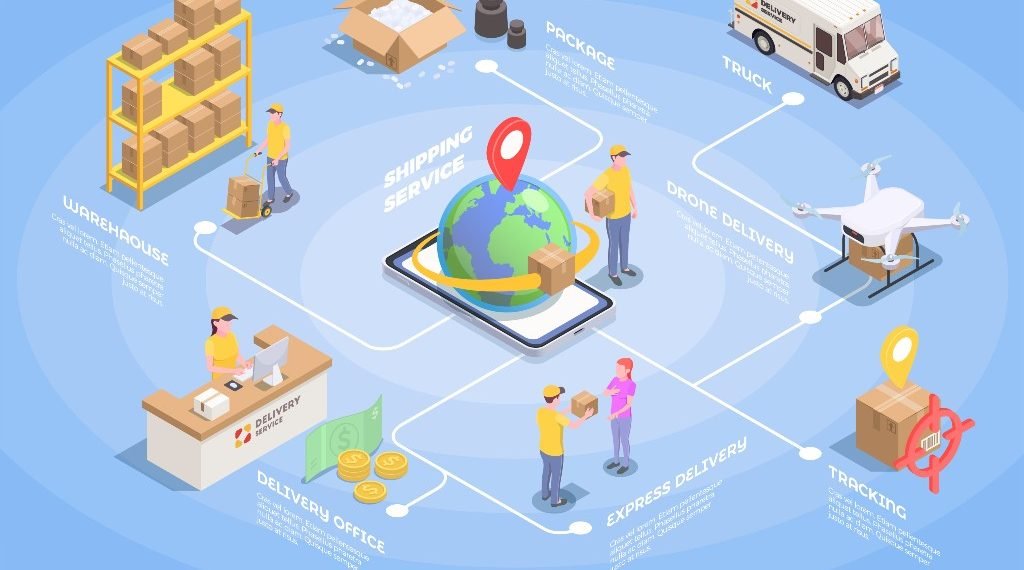With the recent pandemic, the value chain has been affected the most from raw material sourcing to end customers. This disruption is eventually testing the organization. Operational. And commercial resilience of organizations across our planet. The deadly pandemic has exposed many risk and resiliency gaps for multiple organizations. Now as much as 67 percent of CEOs are planning to increase investment in disruption detection and innovation processes.
In this article we will discuss, how should businesses seek to build resiliency into their supply chain?
- Disruption in Logistics: The disruption in global logistics due to the Covid19 pandemic continues to impact various businesses and consumers, as the flow of consumer goods into markets like the U.S, South East Asia, and Europe is restricted due to the continued lockdowns in China and other markets.
This disruption in logistics often creates a ripple effect across the global supply chains that eventually causes goods to pile up in their respective storage facilities. Assuming that these problems will be solved and the airfreight returns to the pre-pandemic levels, it’ll still take some time to get things back to normal. And during this time, one can easily expect to pay higher prices and a longer waiting time. With such a massive disruption in the global supply chain, consumers will have to reset their expectations as items that are needed to be repaired, could also be delayed in the lengthy service queues.
- Delays in Production: The Covid19 induced production delays are leading to various consumers experiencing non-availability of products.
However, the pandemic has shifted businesses’ focus on supply chain evaluation and evolution. Most organizations nowadays are evaluating and investing in their supply chain strategies, which will eventually pave the way for a better and more efficient supply chain.
- Over-Reliance: We all know, that focusing on one major trading partner comes with multiple risk factors. With the pandemic, organizations have understood the importance of equipping their supply chains by identifying alternative trading partnerships. The leaders from the supply chain industry are also turning their attention to third and fourth parties to monitor risks that might cripple their business.
By working with service providers, who provide services as a service, businesses can build greater agility and resilience into their supply chain. New technologies and additional logistics requirements are being provided as variable cost solutions instead of long-term fixed overheads, which in return provides flexibility and more control. All these together can create a nearly bulletproof system with a better appetite for risk and cost mitigation in the future.
- Increasing Investment in Tech: During 2022, one should expect to see a growth in investment as businesses seek to improve their critical supply chain planning capabilities, by investing more and more in the digital in digital solutions, including AI-driven predictive analytics and adding much better integrity and visibility into secure supply chains by using various advanced track and trace and blockchain technologies.
Since the pandemic, one can easily observe that multiple supply chain managers are currently being troubled by a lack of visibility throughout their supply chain, due to a massive number of nodes and participants within the chain. Nowadays, most of the leading companies are using various advanced technologies, to improve their visibility, and have become much more responsive, to various disruptions, and variability in their global, and domestic supply chains.
- Focus on Sustainability: As a growing number of consumers are prioritizing the environment, businesses have increased their efforts in sustainability. In the coming years, businesses around the world might take much more extreme or drastic measures to protect the environment. While some might choose sustainable manufacturing processes or attempt to become zero waste producers. However, most of the time, these attempts may not be sustainable in the long term, as such a drastic shift requires a complete overhaul of the supply chain, from sourcing raw materials to transporting goods to customers.
So, it’s always good to start with small things like updating packaging design and others. By making changes gradually, and deliberately one can increase his/her organization’s commitment to sustainability.
- Workforce and Labor: The pandemic also caused massive uncertainties and shortages in the labor market, which further complicated the post-pandemic recovery for many organizations and industries. Companies are facing shortages in both blue- and white-collar jobs in terms of skills and numbers. Other than the labor-related issues, there are some non-Covid related factors in play companies must look at to reduce the issues related to labor and staffing.
- Cloud-Based Solutions: Cloud-based solutions are the future of supply chain management. The post-pandemic world is slowly moving away from the traditional and localized chain supply management, and the older solutions won’t simply cut it. An organization needs to stay accurate, and agile to stay relevant in the industry. Software-as-a-service model is very much useful for supply chain management. Not only SaaS is much more reliable and secure, but it is much more efficient and convenient. With the ever-changing supply chain, the efficiency provided by SaaS is crucial to support an organization.
- IoT: IoT always plays a great role in the supply chain. During the next few years, more than 50 percent of large organizations, could start using IoT, and other advanced technologies, to support various supply chain operations. Previously, it was believed that IoT technology can be used to provide oversight in operations and transportation. Additionally, IoT can also be used to create smart warehouses and fleets, which will increase the efficiency and accuracy of many areas in the supply chain.
Alongside the pandemic, a flurry of new technologies has fundamentally changed the way people shop and supply chains operate globally. Consumers around the planet are becoming more demanding, which is leading the change and helping to evolve the supply chains at a much faster rate than anticipated. The modern supply chain operations are entirely focused on technology and innovation, which in return makes it much more complex. With the changing supply chain management, the boundary between blue collared and white collared jobs is diminishing fast. We all know that technology cannot be operated in silos and it needs skilled workers who have the right capabilities. So, experts believe, that supply chain and manufacturing operations always need a combination of physical and technological skills in order to sustain and grow in this ever-changing industry. As these trends continue to evolve, the art of supply chain management will continue the same. New development often leads to unforeseen circumstances, both positive and negative. To stay up to date and position a supply chain company for success, one needs to adapt to these still unknown changes in the supply chain.












